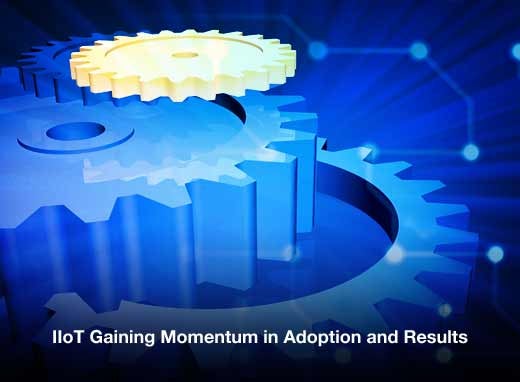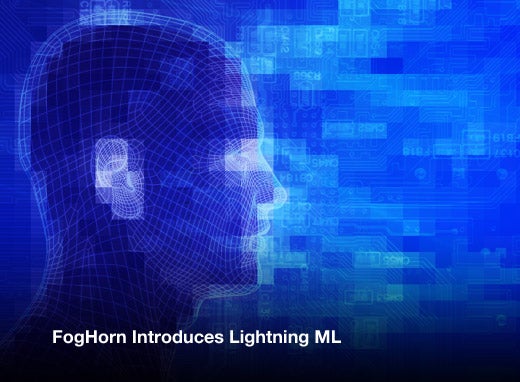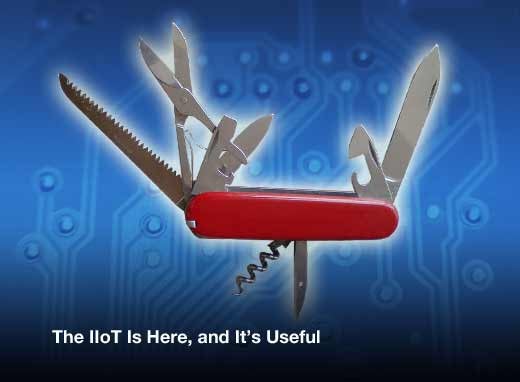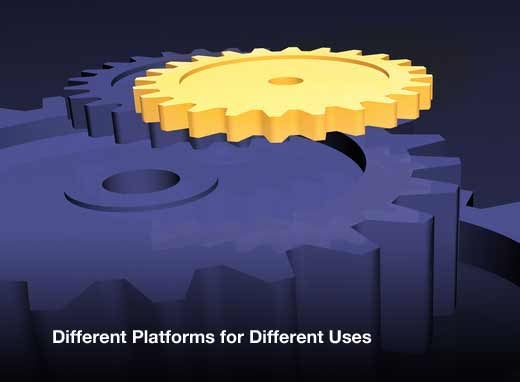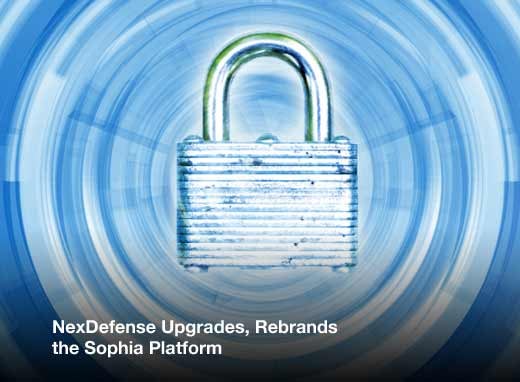The consumer Internet of Things (IoT) is a great thing. It helps us stay fit; increases the IQ of our homes, buildings and cities; and empowers everything from alarm clocks to cars. It is destined to grow and, if security and standards issues are solved, thrive.
The use of the same basic technology in commercial, industrial and other complex and dense environments, the Industrial Internet of Things (IIoT), eventually could be even more impactful. Grandview Research predicted this spring that the global value of the IIoT will reach $993.62 billion by 2025. The value of the sector exceeded $100 billion last year and has a compound annual growth rate (CAGR) of more than 25 percent, according to the report.
Grandview says that businesses want to merge operational and information departments of their organizations. Doing so, the report suggests, will “increase the overall productivity, enhance operational efficiency, improve visibility, and reduce the complexities of different processes in the industry.”
Cost reduction to date has been the main driver of adoption. Other contributors are the emergence of ancillary and complementary technologies, including low-power hardware devices, the cloud, Big Data analytics, robotics and automation and smart sensors. Let’s look into the interesting world of the IIoT.
IIoT Gaining Momentum in Adoption and Results
Cost reduction has been the main driver of IIoT adoption. Other contributors are the emergence of ancillary and complementary technologies, including low-power hardware devices, the cloud, Big Data analytics, robotics and automation and smart sensors.
The IIC and the ECC to Work Together
The Industrial Internet Consortium and the Edge Computer Consortium (IIC and ECC) signed a memorandum of understanding (MoU) to partner on driving computing at the edge of the network. The IIC says that the three pillars of the agreement will be to identify and share IIoT best practices, collaborate on test beds and research and development projects, and work together on standards.
Analytics firm SAS and CSA, a global testing and certification company, both recently joined the IIC.
FogHorn Introduces Lightning ML
To fully leverage the IIoT, processing must be done at the network’s edge. Sending data back and forth to data centers or the cloud is too time consuming and unpredictable for often mission-critical industrial applications.
IIoT software provider FogHorn Systems released Lightning ML, a small-footprint platform geared to quickly process inputs in the field. Lightning ML can execute machine learning capabilities locally via its complex event processing engine. In this way, control over machines can be exercised in real time. Lightning ML can also access assets stored in the cloud when such fast processing is unnecessary.
New Skills Will Be in Demand
The IIoT will employ a lot of IT workers during the next few years. In order to be useful, a certain amount of training or retraining is necessary. Network World suggests that cross-discipline or multi-discipline approaches are best.
Specifically, data scientists, networking experts, cyber security specialists, data architects, software engineers, application developers and programmers will be in demand.
The IIoT Is Here, and It’s Useful
Industry is excited about the IIoT. IndustryWeek reports that a study by Accenture of 1,400 businesses leaders found that 84 percent are confident new revenue streams can be created using IIoT tools. IIoT-enabled manufacturing devices will swell from 237 million two years ago to 923 million by 2020, when $267 billion will be spent by these companies on the IIoT.
The story points to some useful roles for all this spending, including real-time production adjustments, more accurate demand forecasts, just-in-time (JIT) deliveries, rush order reduction (through better systems and data), seamless change orders, and higher quality through manufacturing executive systems (MES).
Different Platforms for Different Uses
Industrial companies are addressing the IIoT in more than one way.
SearchManufacturingERP takes a look at three platforms. The first focuses on asset performance. A good example is GE’s Predix, which is aimed at analyzing industrial data and analytics to sharpen options. A second type of platform takes aim at promoting and enabling interoperability. Siemens AG’s MindSphere is cited as an example of an offering that helps companies create interoperable apps in the cloud. Finally, Honeywell enables companies to “solve long-standing business problems using the technology.” Many of these problems have been vexing industry for many years.
Asavie: Six Months from Prototype to Commercial Use
Asavie, a company that provides enterprise mobility and IoT connectivity products, issued an IIoT survey. The 79 respondents participated in webinars in April and May, which means that the pool of respondents likely consists of a higher percentage of companies who have bought into the concept.
That caveat notwithstanding, the survey found that 60 percent of participants are conducting a live IIoT project and an additional 20 percent have plans to do so this year or next. Twenty percent don’t have a set timeframe. Fifty-seven percent reported that the time from prototype to production can be more than six months. Twenty-six percent said that three months can elapse.
NexDefense Upgrades, Rebrands the Sophia Platform
Needless to say, the security of any IIoT platform is paramount. NexDefense recently updated and rebranded its flagship Integrity product suite. Integrity 32, formerly the Sophia platform, has a better graphical user interface and has enlarged its asset discovery and inventory. The vendor-agnostic platform is safe for industry control systems and SCADA environments.
Other upgrades include a new approach to visualization, rapid detection linked to behavioral detection, enhanced performance and resiliency, and support for NERC CIP v5.
Sony: MultiFire an Industrial IoT Option
A contentious issue is the most efficient and fairest way for cellular devices to join networks that use unlicensed spectrum. The problem is that cellular networks weren’t designed to do this, and a poorly designed scheme may interfere with current users of the spectrum, including Wi-Fi.
One approach is advocated by The MultiFire Alliance. When Sony Mobile Communications joined the alliance, a quote in the press release from Izumu Kawanishi, the executive vice president for Sony Mobile’s Product Business Group, suggested that the MultiFire Alliance holds promise as a way to provide connectivity in industrial IoT settings.
Success Not Guaranteed
Writing at the IoT Journal, Scot Wlodarczak points to a study that says that IIoT projects are considered a complete success in only 26 percent of cases. This means, simply, that people quarterbacking these efforts need all the help they can get.
Wlodarczak counsels companies to start small; define success; align IT and operations; understand and address security risks; avoid data overload and “cultivate a technology-focused culture and IoT expertise.” He also suggests developing a deep understanding of the networks in use and simplifying where possible.
The IIoT Payback Must Be Quick
Radically new approaches require flexibility in assessing performance. Smart Industry Vice President of Content Keith Larson explored time-to-value. As the name implies, TtV focuses on generating results quickly.
The TtV measure also includes ease of purchase and setup, quickness of integration, and ability to scale. Larson mentioned platforms from Rockwell Automation that set themselves up through automated discovery of network assets and dashboards that configure themselves.


